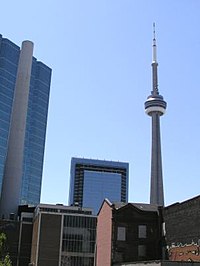
Photo from wikipedia
Seismic vulnerability assessment of urban buildings is among the most crucial procedures to post-disaster response and recovery of infrastructure systems. The present study proceeds to estimate the seismic vulnerability of… Click to show full abstract
Seismic vulnerability assessment of urban buildings is among the most crucial procedures to post-disaster response and recovery of infrastructure systems. The present study proceeds to estimate the seismic vulnerability of urban buildings and proposes a new framework training on the two objectives. First, a comprehensive interpretation of the effective parameters of this phenomenon including physical and human factors is done. Second, the Rough Set theory is used to reduce the integration uncertainties, as there are numerous quantitative and qualitative data. Both objectives were conducted on seven distinct earthquake scenarios with different intensities based on distance from the fault line and the epicenter. The proposed method was implemented by measuring seismic vulnerability for the seven specified seismic scenarios. The final results indicated that among the entire studied buildings, 71.5% were highly vulnerable as concerning the highest earthquake scenario (intensity=7MM and acceleration calculated based on the epicenter), while in the lowest earthquake scenario (intensity=5MM), the percentage of vulnerable buildings decreased to approximately 57%. Also, the findings proved that the distance from the fault line rather than the earthquake center (epicenter) has a significant effect on the seismic vulnerability of urban buildings. The model was evaluated by comparing the results with the weighted linear combination (WLC) method. The accuracy of the proposed model was substantiated according to evaluation reports. Vulnerability assessment based on the distance from the epicenter and its comparison with the distance from the fault shows significant reliable results.
Journal Title: Journal of Mountain Science
Year Published: 2022
Link to full text (if available)
Share on Social Media: Sign Up to like & get
recommendations!